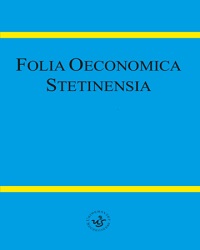VAR Modelling of Dynamics of Poverty, Unemployment, Literacy and Per Capita Income in Nigeria
VAR Modelling of Dynamics of Poverty, Unemployment, Literacy and Per Capita Income in Nigeria
Author(s): Adefemi Alamu Obalade, Ayooluwade Ebiwonjumi, Anthony Olugbenga AdaramolaSubject(s): National Economy, Methodology and research technology, Economic development, Socio-Economic Research
Published by: Wydawnictwo Naukowe Uniwersytetu Szczecińskiego
Keywords: VAR; Poverty; Unemployment; Illiteracy; per capital income;
Summary/Abstract: Research background: Poverty, unemployment, literacy and per capita income are intertwined. However, there seems to be a disconnect between literacy and good living in Nigeria. Purpose: This study investigated the dynamic relationship between poverty, unemployment, literacy and per capita income in Nigeria by examining the impact, shocks and responses among these identified variables. Research methodology: The secondary data on poverty, unemployment and literacy rates were extracted from the National Bureau of Statistics and per capita income was extracted from the World Bank Annual Report. A vector autoregressive (VAR) model of lag order (4) was adopted for the study. Results: The results revealed that poverty rate is an increasing function of unemployment rate and literacy rate and a reducing function of per capita income. The results further showed that dynamics of poverty is affected by shocks in unemployment rate, literacy rate and per capita income. Novelty: Therefore, the study concluded that literacy rate fails as a vital tool for poverty reduction and that the high rate of unemployment results in chronic poverty. The application of VAR to untangle the interrelationship among the variables, without doubt, adds to the literature on the uses of the VAR model.
Journal: Folia Oeconomica Stetinensia
- Issue Year: 19/2019
- Issue No: 1
- Page Range: 73-88
- Page Count: 16
- Language: English

